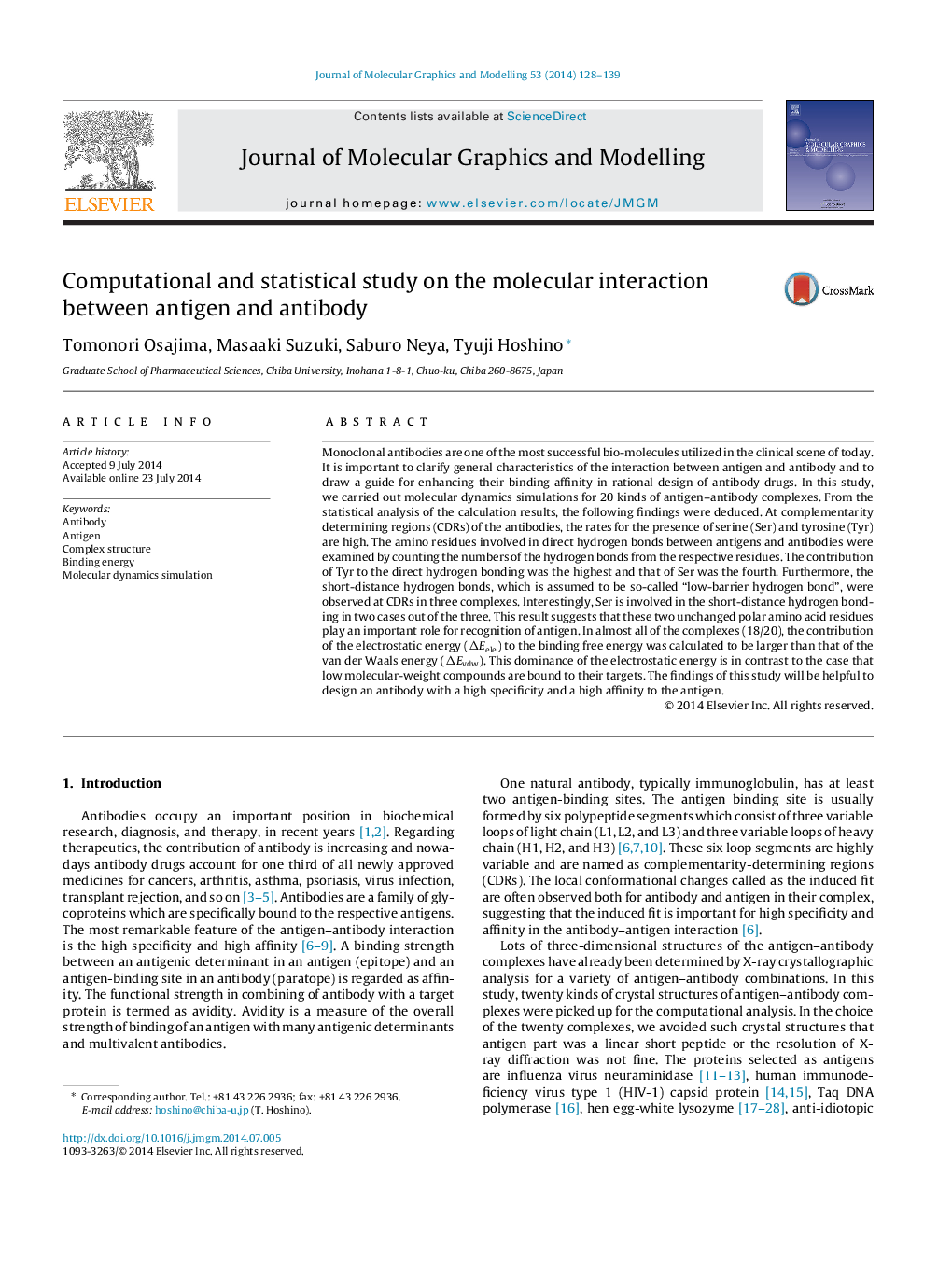| کد مقاله | کد نشریه | سال انتشار | مقاله انگلیسی | نسخه تمام متن |
|---|---|---|---|---|
| 443314 | 692703 | 2014 | 12 صفحه PDF | دانلود رایگان |
• Simulations were performed to clarify the factors in antigen–antibody interaction.
• Appearance rate of each kind of amino acid residue at CDR was counted.
• The residues strongly involved in the antigen–antibody binding were suggested.
• The binding free energy and its energetic components were examined.
Monoclonal antibodies are one of the most successful bio-molecules utilized in the clinical scene of today. It is important to clarify general characteristics of the interaction between antigen and antibody and to draw a guide for enhancing their binding affinity in rational design of antibody drugs. In this study, we carried out molecular dynamics simulations for 20 kinds of antigen–antibody complexes. From the statistical analysis of the calculation results, the following findings were deduced. At complementarity determining regions (CDRs) of the antibodies, the rates for the presence of serine (Ser) and tyrosine (Tyr) are high. The amino residues involved in direct hydrogen bonds between antigens and antibodies were examined by counting the numbers of the hydrogen bonds from the respective residues. The contribution of Tyr to the direct hydrogen bonding was the highest and that of Ser was the fourth. Furthermore, the short-distance hydrogen bonds, which is assumed to be so-called “low-barrier hydrogen bond”, were observed at CDRs in three complexes. Interestingly, Ser is involved in the short-distance hydrogen bonding in two cases out of the three. This result suggests that these two unchanged polar amino acid residues play an important role for recognition of antigen. In almost all of the complexes (18/20), the contribution of the electrostatic energy (ΔEele) to the binding free energy was calculated to be larger than that of the van der Waals energy (ΔEvdw). This dominance of the electrostatic energy is in contrast to the case that low molecular-weight compounds are bound to their targets. The findings of this study will be helpful to design an antibody with a high specificity and a high affinity to the antigen.
Figure optionsDownload high-quality image (225 K)Download as PowerPoint slide
Journal: Journal of Molecular Graphics and Modelling - Volume 53, September 2014, Pages 128–139
